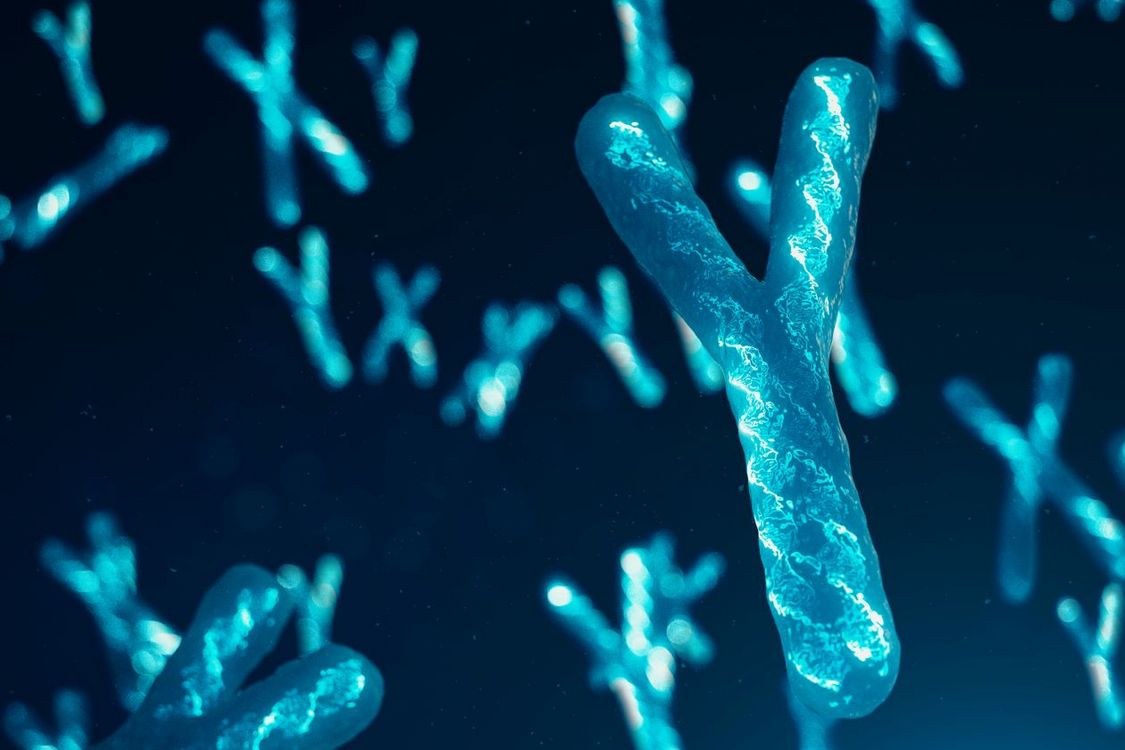
For the first time, scientists have identified the Y chromosome, which could lead to treatments for male cancers and reproduction issues.
The Y chromosome is tiny and stubby, and it contains genes that offer instructions for creating proteins important in sperm production and development.
Researchers have stitched it all together and discovered more than 62 million DNA base pairs—30 million more than previously identified — as well as 41 new protein-coding genes on the Y chromosome.
It was partially sequenced in 2003, but only half of it was found.
While the scientists’ research is still in its early stages, they believe the mapping could find mutations and link them to certain qualities, leading to individualized therapies for genetic illnesses.
The Y chromosome is by far the most difficult human chromosome to sequence
Scientists discovered more than 62 million DNA base pairs—30 million more than the previous analysis 20 years ago – as well as 41 new protein-coding genes that guide our DNA on how to build them.
Previous study has indicated that men can lose some or all of their genetic material as they age, but scientists have never fully understood why this occurs or what implications it may have.
Cancer, heart disease, cancer, and Alzheimer’s disease are all increased risks, as is a diminishing sperm count, which causes infertility.
Kateryna Makova of Penn State University, a collaborator on the study, said: ‘The Y chromosome is by far the most difficult human chromosome to sequence and assemble.
‘Deciphering its full sequence is an important scientific milestone. My group has been working on the Y-chromosome for over twenty years and I didn’t think it would be possible to determine its complete sequence in the short term.’
The X chromosome was fully sequenced in 2020 by NHGRI researchers, who opted to sequence it first due to its association with a variety of disorders such as hemophilia, chronic granulomatous disease, and Duchenne muscular dystrophy.
Because there are 24 chromosomes, including Y and X, humans have 23 pairs, while other great apes have 24.
Because of its somewhat complicated structure, the Y chromosome proved elusive. The Y chromosome, unlike most others, is made up of palindromes, or sequences that are the same forward and backward.
“This looks like the blueprint we’re looking at”
To solve this puzzle, the T2T Consortium, which was supported by the National Human Genome Research Institute (NHGRI), used new DNA sequencing technology, sequence assembly methodologies, and expertise obtained from obtaining the first gapless sequences for the other 23 human chromosomes.
Adam Phillippy, senior researcher at NHGRI and consortium leader, said: ‘The biggest surprise was how organized the reruns are.
“We didn’t know what exactly the missing sequence consisted of. It could have been very chaotic, but instead, nearly half of the chromosome is made up of alternating blocks of two specific repeating sequences known as satellite DNA.
“It produces a beautiful, quilt-like pattern.”
The 30 million additional bases added to the Y chromosome reference will be useful for analyzing genome evolution as well.
Specific and distinct Y chromosome sequence patterns, such as the structure of the two satellites and the position and copy counts of the genes, may now be studied.
In a second study, researchers from the University of Washington used the reference sequence to build 43 me Y chromosomes with African origins.
The researchers discovered that the individuals had a common ancestor who lived around 183,000 years ago. The length of Y chromosomes varied greatly, ranging from 45.2 million to 84.9 million base pairs.
Philip told LiveScience “This looks like the blueprint we’re looking at, and if it has complete holes in it, you might not even know where to start.” “But by filling them in, we have the complete picture.”
